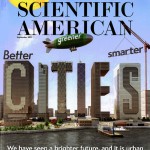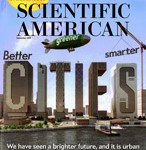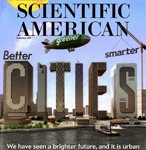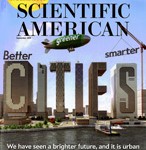Welcome Aboard Scientific American!
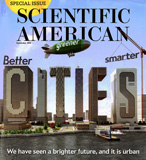
I have been keeping an eye on Scientific American since the days when, as a young architect, I worked for Luigi Pellegrin. He was a serious interpreter of nature (human nature included.) He read Scientific American regularly. Some of the concepts on “urban flow” and “vectors” that generated some of his more visionary projects where inspired by his interest in biology and chemistry – I’m pretty sure of it.
-
Scientific American September 2011
-
Scientific American – September 20011
-
Scientific American September 2011
- Scientific American September 2011
- Scientific American – September 20011
- Scientific American September 2011
When I recently saw the Scientific American’s special issue dedicated to “Cities,” I said to myself: “welcome aboard; it’s time!” Flipping through its pages, I was surprised by the variety of inputs and subjects that related to the central theme. The magazine’s editors and New York City’s Mayor, Michael Bloomberg were there; articles included subjects such as neuroscience, social nexus, lessons to learn from shantytowns, the greening of the city, inquisitive questions about high-rise buildings (of which 50% of the world’s total were built during the last decade) and dilemmas about balancing priorities between investing on brains and/or in buildings, building from the top down or from the bottom up.
The facts are that from today’s world population of seven billion people, over half of them already live in urban environments. By 2050, with a population of about nine billion, it is estimated that urban-dwellers will be two thirds. Simple arithmetic tells me that an average of about 17,000,000 dwelling units per year– plus schools, hospitals, services and you name it – will be needed for the next forty years. All these in addition to fixing today’s urban problems. It won’t be enough for architects to stop sleeping; we need billions of people “to wake up,” to become aware of architecture’s basics and to take active part in the world’s building.
Massive capital investment, land/space management, speedy construction technology methods that are sustainable and “IKEA-like” self-help construction are urgently needed. Yet once the quantitative problem is acknowledged by both the general public and by decision-makers, the next question is: what defines life quality?
“We the People of Planet Earth” must change our value-system and redefine “the pursuit of happiness:” what is that we really need to be physically, psychologically and monetarily healthy, and also to be self-actualized?
“Taking a more bottom-up view of how cities actually develop gives us an opportunity to radically rethink what intelligent, connected communities of the future could look like and how they can be designed, built and lived in,”
 Architecture Awareness
Architecture Awareness
